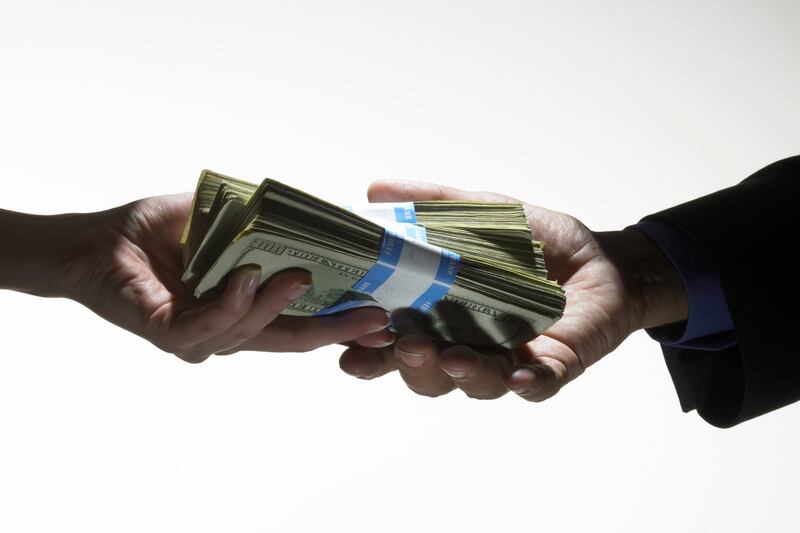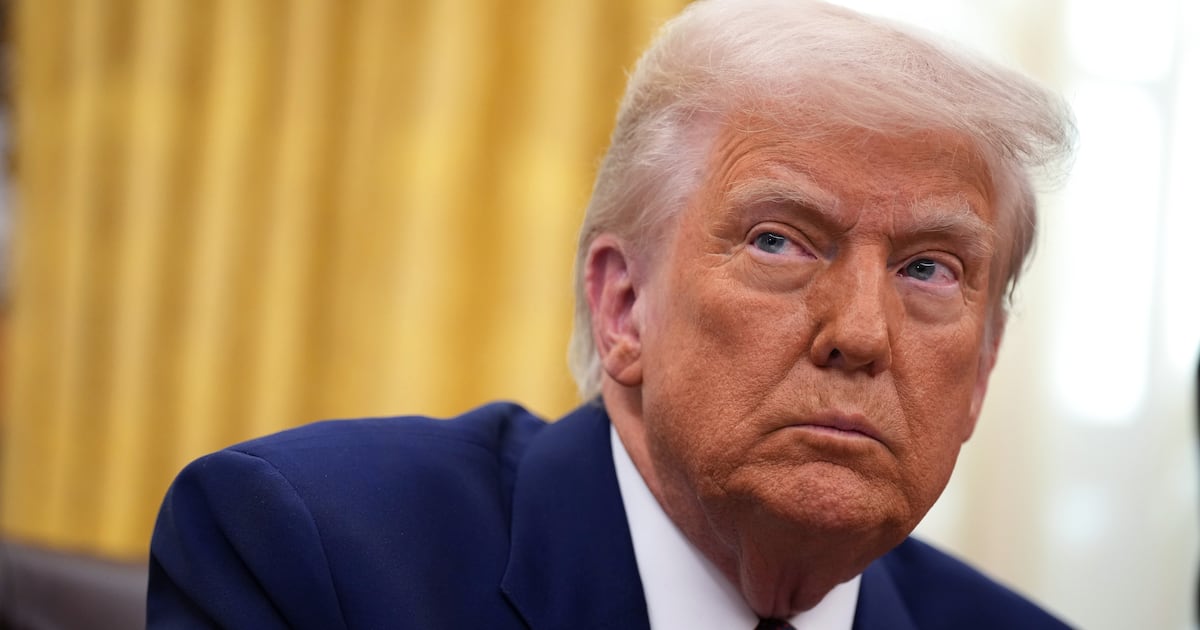In the dead of night on April 7, 1972, Archer Daniels Midland CEO Dwayne Andreas slipped $25,000 into a safe-deposit box near his Florida home. The funds—destined for Richard Nixon’s Committee to Re-Elect the President (CREEP)—were entirely legal, if by a matter of minutes. They arrived moments before midnight, April 8, when the Federal Elections Campaign Act (FECA) went into effect, rendering such anonymous contributions to candidates illegal.

The donation was a sliver of the $122,000 Andreas ultimately gave to Nixon’s reelection, and generous though it was, he had also given $150,000 to an old friend, former vice president Hubert Humphrey, one of Nixon’s Democratic opponents.
Yet, it was that $25,000—placed so carefully on the dark side of the cusp between the old and the new world of campaign finance—that made its way through CREEP and into the bank account of White House “plumber” Bernard Barker, whose burglary of the Democratic National Convention offices at the Watergate Hotel would ultimately lead to the resignation of President Nixon.
In the years that followed, FECA would be amended several times, and despite the law’s nagging imperfections, by 1984 neither Ronald Reagan nor Walter Mondale held a single fundraiser, and both received public funds.
If FECA was the post-Watergate era’s answer to the role of money in domestic politics, the Foreign Corrupt Practices Act (FCPA) was the same era’s answer to the role of money in international politics. In the 1960s and 1970s, American companies were found to have given hundreds of millions of dollars in bribes to officials and politicians around the world. Many of the players in the campaign scandals of 1972 were involved in the international bribery that led to the FCPA. Stanley Sporkin, the SEC director of enforcement investigating the corporate contributions to CREEP, told Frontline in 2009 that it was in investigating illegal corporate contributions to Nixon’s committee that he realized the same companies were bribing officials abroad. In other words, the campaign contributors at the center of the Watergate scandal were, in many cases, the same involved in the international bribery that led to the FCPA.
For example, jet-setting Saudi arms dealer Adnan Khashoggi is thought to have funneled millions to CREEP, though only $50,000 was ever documented. Meanwhile, Khashoggi was the de facto “marketing arm” for Lockheed (now Lockheed Martin), and he played a key role in the company’s bribery scandals of the 1970s, as documented by William D. Hartung of the Center for International Policy in his book Prophets of War.
Since the passage of FECA and FCPA, the fortunes of political donors and the misdeeds of their companies abroad have continued to collide on more than a few occasions. In 2012 alone, there are a handful of examples to choose from. Larry Ellison, founder of Oracle Corp., gave $3 million to the pro-Romney super PAC Restore Our Future just two months after his company Oracle paid $2 million in a settlement with the SEC for misconduct by an Indian subsidiary.

Obama bundler and donor to the pro-Obama super PAC Priorities USA Action Jeffrey Katzenberg heads DreamWorks Animation, one of five companies contacted by the SEC last year in relation to an investigation into possible “illegal payments to officials in China,” according to The New York Times. The negotiations over how many Hollywood films would be played each year in Chinese theaters involved both Hollywood executives and politicians, including direct talks between Vice President Joe Biden and his Chinese counterpart at the time, Xi Jinping. While there’s no suggestion that the American vice president was in any way involved with any possible illegal payments, the Times noted that “given the level of diplomacy involved ... [the] inquiry could be an embarrassment to the Obama administration.”
Oil giant Chevron passed $2.5 million directly from its corporate treasury to the conservative Congressional Leadership Fund, making it one of only a handful of publicly traded companies to contribute directly to a super PAC—which have to report their donors.
There is no way to know how much publicly traded companies gave to politically active nonprofits, which aren’t required to disclose their donors, but we know these organizations spent vast sums in 2012. For comparison, the 1972 presidential election is thought to have cost more than $300 million in today’s dollars. That amounts to the total reported spending by politically active nonprofits alone last year, half of it in the presidential race that cost well over $2 billion total.
Chevron’s super-PAC contribution is the subject of a formal FEC complaint by watchdog groups led by Public Citizen, claiming that the contribution violates the “pay to play” prohibitions for government contractors. This all comes five years after Chevron paid a $30 million fine to settle charges of bribery brought under the FCPA involving the U.N. Oil-for-Food Program in 2001 and 2002.
And finally, there’s Sheldon Adelson, the casino magnate and unmatched political donor. Last week, the Las Vegas Sands—headed by Adelson—reported in an SEC filing that the “preliminary findings” of the company’s annual audit suggest “there were likely violations of the books and records and internal controls provisions of the [Foreign Corrupt Practices Act].” No charges have been filed, and the Sands vehemently denies that any bribery is involved, pointing out instead that the potential violations were of the internal “accounting provisions” of the FCPA.
The fact that Adelson’s company might have violated the FCPA does not set him apart from other liberal or conservative donors today, but there are some things in particular about Adelson that recall Dwayne Andreas.
Both men’s contributions came in elections that saw unprecedented floods of money, including undisclosed money. Both Adelson and Andreas were highly connected in the political sphere at home and abroad, and their influence went well beyond their money. Andreas hobnobbed with presidents and politicians of all stripes. Internationally, he had in-depth conversations with then–secretary of agriculture Mikhail Gorbachev, and future president Boris Yeltsin visited his home in Florida.
Likewise, Adelson’s $92.8 million in reported contributions is only one component of his political presence. When Mitt Romney took a tour of Israel during the campaign, Adelson was by his side at a fundraising breakfast in Jerusalem. In May 2012, Romney met privately with Adelson, and only days after Congressman Paul Ryan was tapped as Romney’s running mate, Ryan flew to the Venetian for a private meeting.
As for their international legal trouble, Andreas is still in a league of his own. In the 1990s, the politically influential Archer Daniels Midland was at the center of a massive international price-fixing conspiracy in the lysine and citric-acid markets. ADM ended up paying $100 million in fines, and Andreas’s son Michael was sentenced to 99 months in jail in one of the largest antitrust cases in US history.
The final, and perhaps most important, similarity between these men is that the money both men poured into the American political system was, by all accounts, legal. While Andreas was indicted in 1972 for illegal campaign contributions to Hubert Humphrey’s previous 1968 campaign, he was acquitted of the charges.
The breathtaking contributions that have made Adelson a household name came in the wake of Citizens United, which freed wealthy donors like him to pour money into super PACs and, anonymously, into politically active social-welfare organizations like the Republican Jewish Coalition, on whose board Adelson sits.
Perhaps the most notable difference between the two men when it comes to money in politics is that Andreas was a player in an era when controls—however imperfect—were being implemented to stem the influence of wealthy donors such as himself on candidates, while Adelson has become the poster child for the consequences of rolling back those controls.
And though his company may be in hot water abroad, Adelson has remained in the clear at home.






